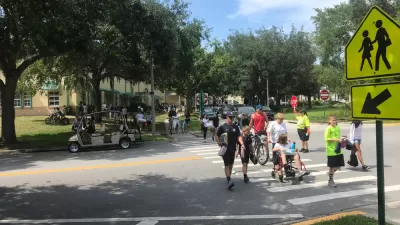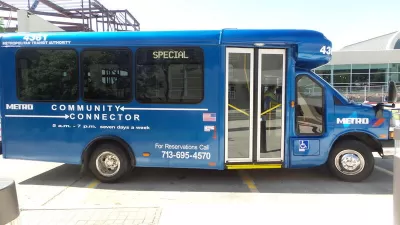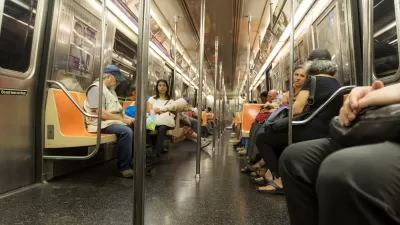Policymakers and venture capital firms love the idea of Mobility-as-a-Service. The public hasn't proven as receptive, despite the willingness to download apps by the millions.

David Zipper writes on the stalled progress of Mobility-as-a-Service companies in capturing the hearts and minds of the world's commuters and movers.
Zipper defines Mobility as a Service (MaaS) as an online platform, usually an app, that allows users to choose from all available transportation modes.
Count Uber among the companies championing the idea of MaaS, and the market has been flooded with apps hoping to deliver on the concept: "MaaS’s most prominent champions have been a group of popular startups offering slick apps like Citymapper, Transit and MaaS Global (the company behind Whim)." Zipper also notes that cities as geographically disparate as Berlin and Louisville have gotten into the MaaS game.
The public has responded with interest from these efforts by the private and public sectors: "Millions of users across Europe, North America, and Asia have downloaded these apps, and venture capital firms endorsing their vision of a multimodal urban future have invested tens of millions of dollars."
But that interest is proving tentative and potentially temporary. "MaaS’s momentum ('MaaSmentum'?) is at risk of stalling," according to Zipper. "To date, MaaS companies have found limited traction among urban residents, even in favorable markets," according to Zipper."
The article includes a lot more detail about the challenges in building consumer preference and commercial traction for MaaS platforms.
FULL STORY: The Problem With ‘Mobility as a Service’

Study: Maui’s Plan to Convert Vacation Rentals to Long-Term Housing Could Cause Nearly $1 Billion Economic Loss
The plan would reduce visitor accommodation by 25,% resulting in 1,900 jobs lost.

North Texas Transit Leaders Tout Benefits of TOD for Growing Region
At a summit focused on transit-oriented development, policymakers discussed how North Texas’ expanded light rail system can serve as a tool for economic growth.

Why Should We Subsidize Public Transportation?
Many public transit agencies face financial stress due to rising costs, declining fare revenue, and declining subsidies. Transit advocates must provide a strong business case for increasing public transit funding.

How to Make US Trains Faster
Changes to boarding platforms and a switch to electric trains could improve U.S. passenger rail service without the added cost of high-speed rail.

Columbia’s Revitalized ‘Loop’ Is a Hub for Local Entrepreneurs
A focus on small businesses is helping a commercial corridor in Columbia, Missouri thrive.

Invasive Insect Threatens Minnesota’s Ash Forests
The Emerald Ash Borer is a rapidly spreading invasive pest threatening Minnesota’s ash trees, and homeowners are encouraged to plant diverse replacement species, avoid moving ash firewood, and monitor for signs of infestation.
Urban Design for Planners 1: Software Tools
This six-course series explores essential urban design concepts using open source software and equips planners with the tools they need to participate fully in the urban design process.
Planning for Universal Design
Learn the tools for implementing Universal Design in planning regulations.
City of Santa Clarita
Ascent Environmental
Institute for Housing and Urban Development Studies (IHS)
City of Grandview
Harvard GSD Executive Education
Toledo-Lucas County Plan Commissions
Salt Lake City
NYU Wagner Graduate School of Public Service





























